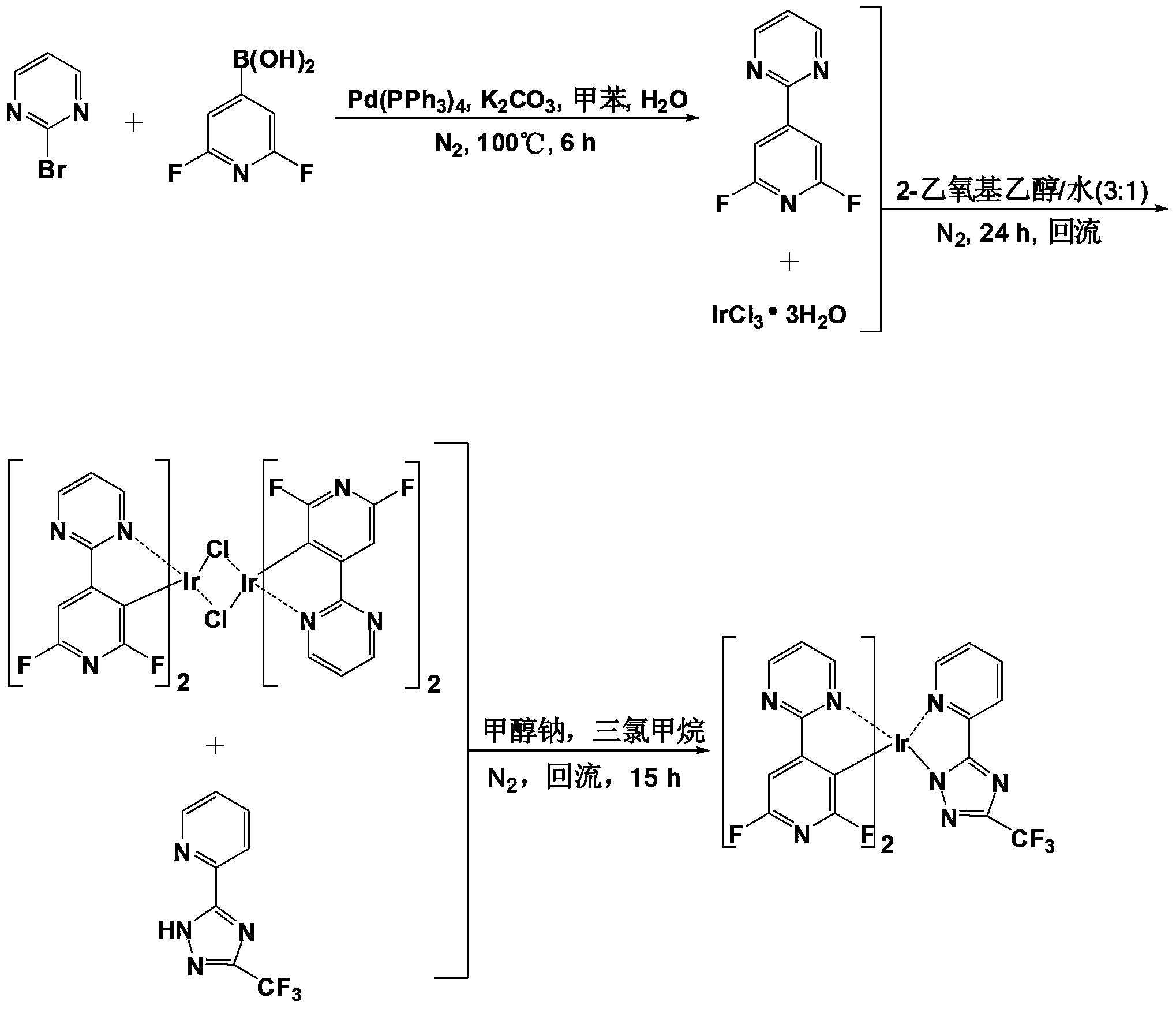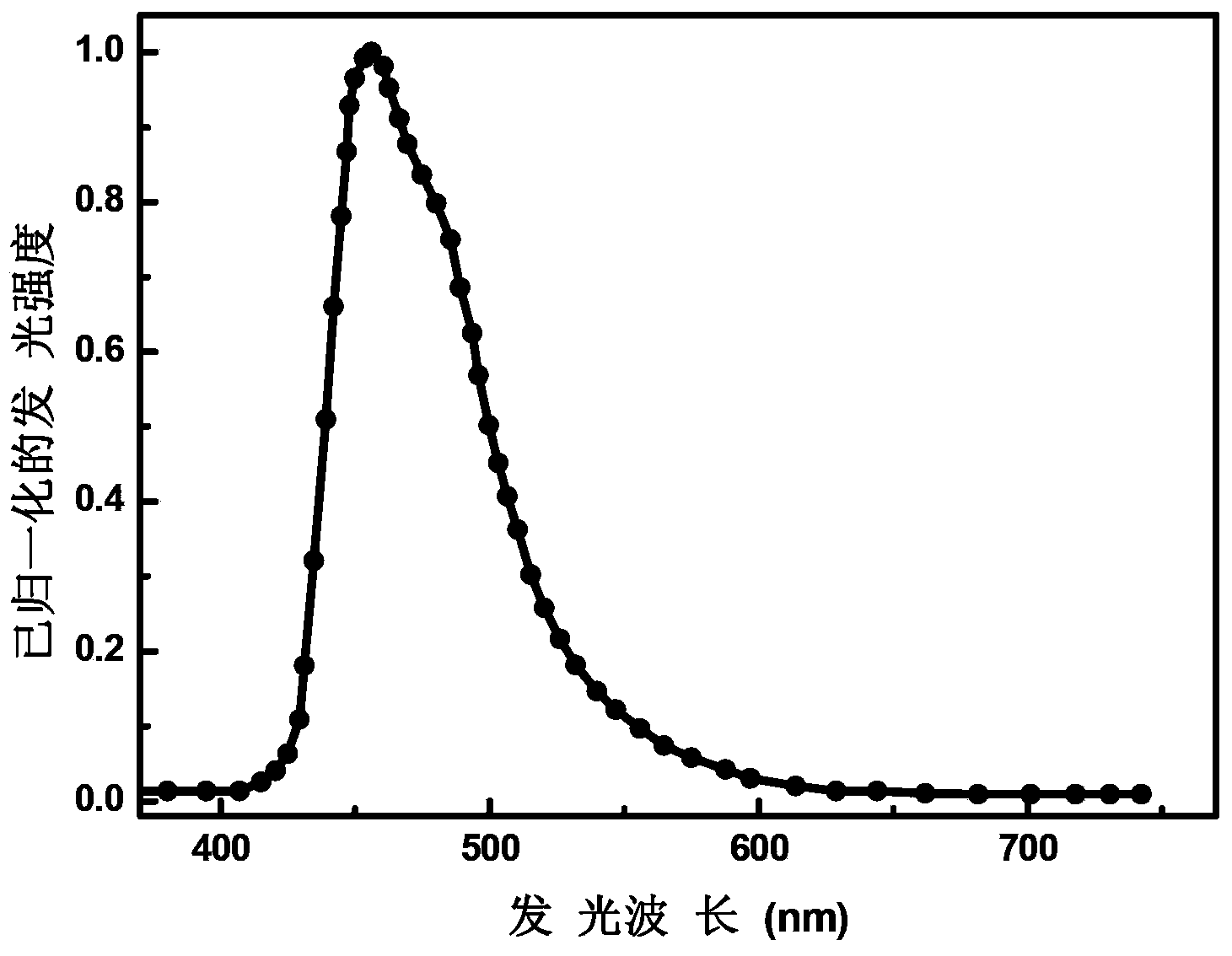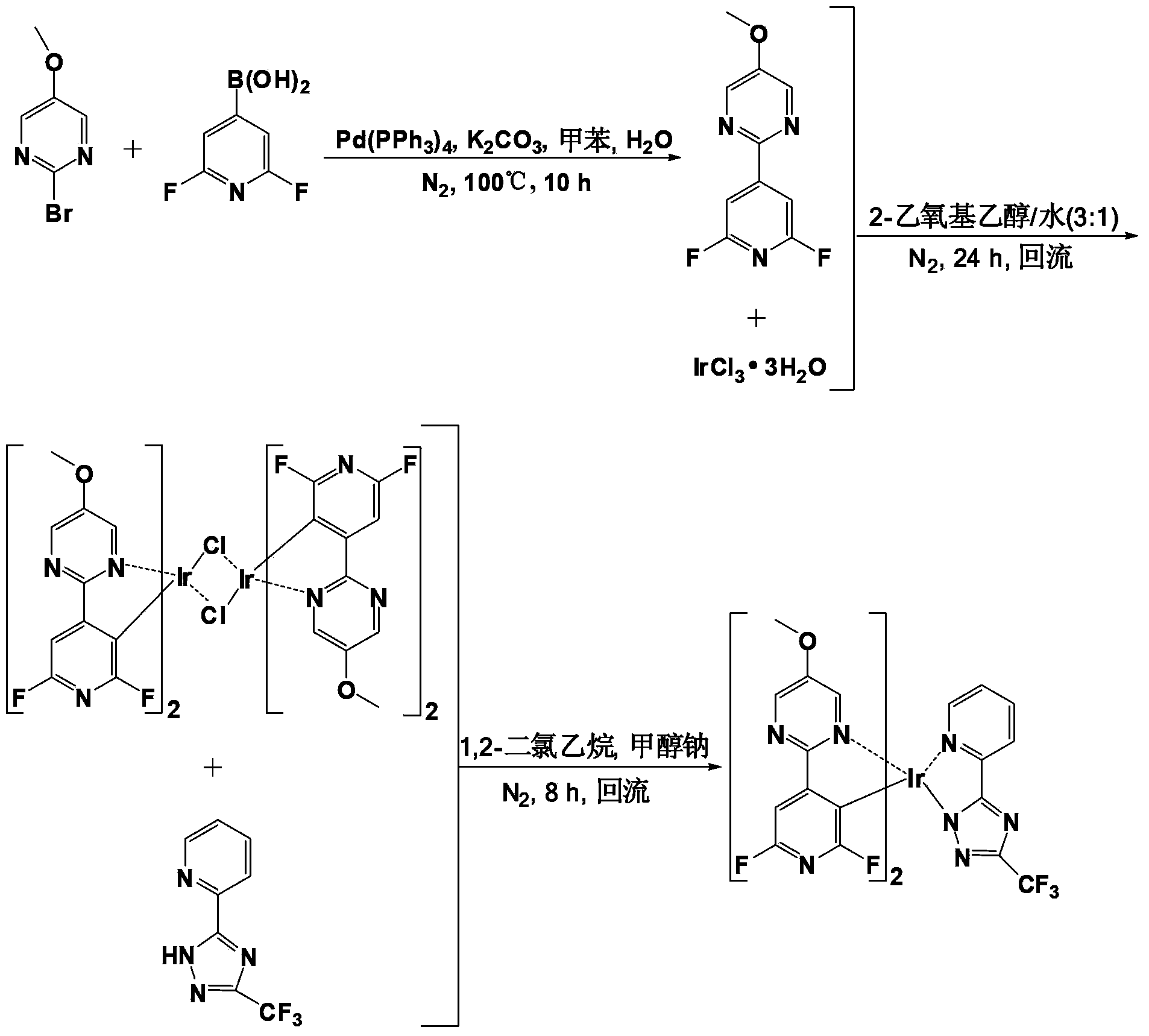Organic electroluminescent material, preparation method and application thereof
An electroluminescent material and electroluminescent technology, applied in the fields of luminescent materials, organic chemistry, indium organic compounds, etc., can solve problems such as poor blue color purity, reduce the probability of non-radiative transition, good blue light emitting performance and stability the effect of reducing the self-quenching phenomenon
- Summary
- Abstract
- Description
- Claims
- Application Information
AI Technical Summary
Problems solved by technology
Method used
Image
Examples
Embodiment 1
[0070] This example provides a bis(2-(2′,6′-difluoropyridin-4′-yl)pyrimidine-N,C 3 ')(3-trifluoromethyl-5-(2'-pyridyl)-1,2,4-triazole) iridium complex, the chemical structure of which is shown in P1:
[0071]
[0072] The preparation steps of the above P1 are as follows:
[0073] S10, providing compound A1 (2-bromopyrimidine) and compound B (2,6-difluoropyridine-4-boronic acid) represented by the following structural formula:
[0074]
[0075] S20. Synthesis of compound C1 (2-(2',6'-difluoropyridin-4'-yl)pyrimidine)
[0076] Under nitrogen protection, compound A1 (1.59g, 10mmol), compound B (1.91g, 12mmol) and Pd(PPh 3 ) 4 (0.58mg, 0.5mmol) was dissolved in 40mL of toluene, and then 20mL of an aqueous solution containing potassium carbonate (2.76g, 20mmol) was added, and the reaction was stirred at 100°C for 6 hours; Extract with methane, separate liquid, then wash with water until neutral, then dry with anhydrous magnesium sulfate and filter, evaporate the filtrate ...
Embodiment 2
[0102] This example provides a bis(2-(2′,6′-difluoropyridin-4′-yl)-5-methylpyrimidine-N,C 3 ')(3-trifluoromethyl-5-(2'-pyridyl)-1,2,4-triazole) iridium complex, the chemical structure of which is shown in P2:
[0103]
[0104] The preparation steps of above-mentioned P2 are as follows:
[0105] S10, providing compound A2 (2-bromo-5-methylpyrimidine) and compound B (2,6-difluoropyridine-4-boronic acid) represented by the following structural formula:
[0106]
[0107] S20. Synthesis of compound C2 (2-(2′,6′-difluoropyridin-4′-yl)-5-methylpyrimidine)
[0108] Under nitrogen protection, compound A2 (1.73g, 10mmol), compound B (1.76g, 10mol) and Pd(PPh 3 ) 2 Cl 2 (0.28mg, 0.4mmol) was dissolved in 50mL of DMF, and then 25mL of an aqueous solution containing sodium carbonate (3.18g, 30mmol) was added, and stirred at 90°C for 8 hours; Extract, separate liquid, then wash with water until neutral, then dry with anhydrous magnesium sulfate and filter, the filtrate is evapora...
Embodiment 3
[0131] This example provides a bis(2-(2′,6′-difluoropyridin-4′-yl)-5-tert-butylpyrimidine-N,C 3 ')(3-trifluoromethyl-5-(2'-pyridyl)-1,2,4-triazole) iridium complex, the chemical structure of which is shown in P3:
[0132]
[0133] The preparation steps of above-mentioned P3 are as follows:
[0134] S10. Provide compound A3 (2-bromo-5-tert-butylpyrimidine) and compound B (2,6-difluoropyridine-4-boronic acid) represented by the following structural formula:
[0135]
[0136] S20. Synthesis of compound C3 (2-(2′,6′-difluoropyridin-4′-yl)-5-tert-butylpyrimidine)
[0137] Under nitrogen protection, compound A3 (2.15g, 10mmol), compound B (2.22g, 14mmol) and Pd(PPh 3 ) 2 Cl 2 (0.21mg, 0.3mmol) was dissolved in 35mL of DMF, and then 15mL of an aqueous solution containing sodium carbonate (1.06g, 10mmol) was added, and stirred at 85°C for 10 hours; extraction, liquid separation, and then washed to neutrality, then dried with anhydrous magnesium sulfate and filtered, and the...
PUM
 Login to View More
Login to View More Abstract
Description
Claims
Application Information
 Login to View More
Login to View More - R&D
- Intellectual Property
- Life Sciences
- Materials
- Tech Scout
- Unparalleled Data Quality
- Higher Quality Content
- 60% Fewer Hallucinations
Browse by: Latest US Patents, China's latest patents, Technical Efficacy Thesaurus, Application Domain, Technology Topic, Popular Technical Reports.
© 2025 PatSnap. All rights reserved.Legal|Privacy policy|Modern Slavery Act Transparency Statement|Sitemap|About US| Contact US: help@patsnap.com



